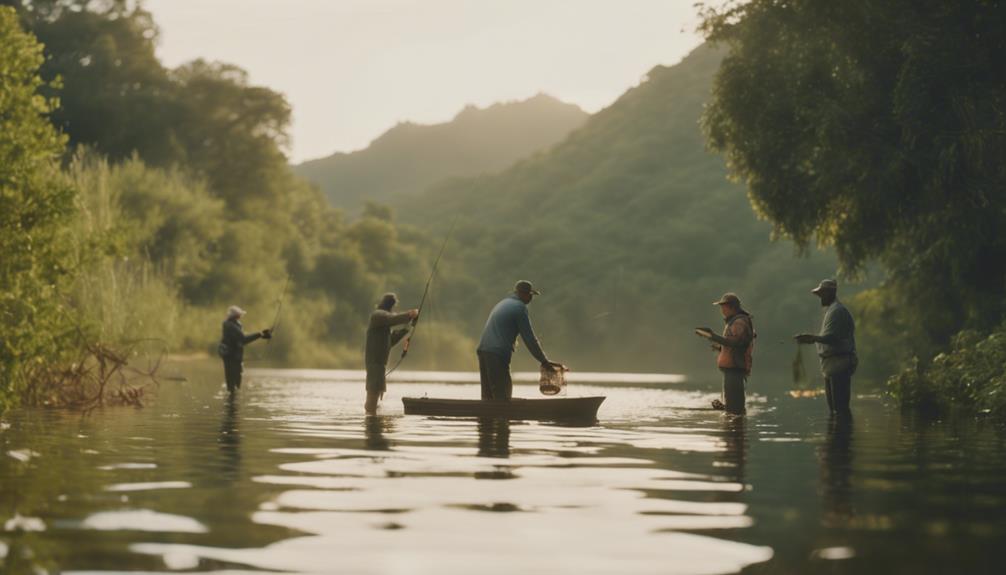What Are Flies for Fly Fishing?
When it comes to fly fishing, the term “flies” refers to artificial lures designed to mimic the appearance and movement of insects, baitfish, or other aquatic creatures. These flies are crafted from various materials, including feathers, fur, and synthetic materials, and are tied onto a hook. The objective is to entice fish, particularly species like trout, bass, and salmon. Understanding the types of flies for fly fishing is essential for any angler looking to improve their catch rate and overall fishing experience.
Types of Flies: Dry, Wet, and Nymphs
Flies for fly fishing can be categorized into three main types: dry flies, wet flies, and nymphs. Dry flies float on the surface of the water, imitating insects that have just landed or are hatching. They require careful presentation to entice fish that are feeding on the surface. Wet flies, on the other hand, sink below the surface and imitate submerged insects or small baitfish. These flies are particularly effective in deeper waters. Lastly, nymphs represent the larval stage of insects, typically found underwater. Each type serves a specific purpose and is tailored to different fishing conditions, making it crucial for anglers to choose the right flies based on the situation.
Choosing the Right Fly for the Season
The choice of flies for fly fishing can significantly impact your success, and this often varies by season. In spring, when aquatic insects begin to emerge, mayflies and stoneflies are popular choices. Summer is prime time for terrestrial insects, making grasshopper and ant patterns effective. As fall approaches, anglers often switch to streamers that mimic baitfish as they become more active. Winter fishing can be challenging, but using nymphs and small midges can yield better results. By adapting your fly selection to seasonal changes, you improve your chances of attracting fish.
Understanding Hatch Patterns
To effectively choose flies for fly fishing, understanding local hatch patterns is vital. Hatches refer to the emergence of insects from their aquatic larval stage into adults that fly above the water. Each body of water has its unique hatches, which can vary based on the time of year and environmental conditions. By observing the insects present during your fishing trip, you can select flies that closely match their appearance and behavior. Local fly shops and online resources often provide hatch charts specific to different regions, making it easier for anglers to stay informed.
How to Match the Hatch with Flies
Matching the hatch is a fundamental concept in fly fishing that involves selecting flies that closely resemble the size, color, and shape of the insects currently present in the water. When fish are selectively feeding on specific insects, using a fly that accurately imitates these can significantly increase your chances of a successful catch. For example, if you notice mayflies hatching, opt for a dry fly that mimics their size and color. Pay attention to the behavior of fish as well; sometimes, they may prefer a more erratic movement, requiring you to adjust your retrieve to match what they are feeding on.
Popular Fly Patterns Every Angler Should Know
When it comes to flies for fly fishing, there are several popular patterns that every angler should familiarize themselves with. Some of the most effective dry flies include the Adams, Elk Hair Caddis, and Royal Wulff. For wet flies, consider the Woolly Bugger, Pheasant Tail, and Gold Ribbed Hare’s Ear. Nymphs like the Copper John and Prince Nymph are essential for those who want to fish below the surface. Understanding these patterns and their specific applications will help you become a more versatile angler, capable of adjusting your technique based on the conditions.
DIY Fly Tying: Crafting Your Own Flies
For those looking to deepen their involvement in fly fishing, learning how to tie your own flies can be a rewarding experience. Crafting your own flies not only allows for customization but also enhances your understanding of the insects you are trying to imitate. Basic fly tying involves selecting the right materials, using proper techniques, and practicing different patterns. There are numerous resources available, including books, online tutorials, and local fly-tying classes, that can guide you through the process. Tying your own flies can be an enjoyable hobby that enhances your fishing experience.
Conclusion: Elevate Your Fly Fishing Experience with the Right Flies
In conclusion, flies for fly fishing are an essential component of successful angling. By understanding the different types of flies, seasonal changes, hatch patterns, and popular fly patterns, you can significantly improve your fishing outcomes. Whether you choose to purchase flies or create your own, the right selection can make all the difference on the water. As you continue to explore the world of fly fishing, remember that knowledge and adaptability are key. Equip yourself with the right flies, and you’ll be well on your way to an enjoyable and fruitful fishing adventure.
